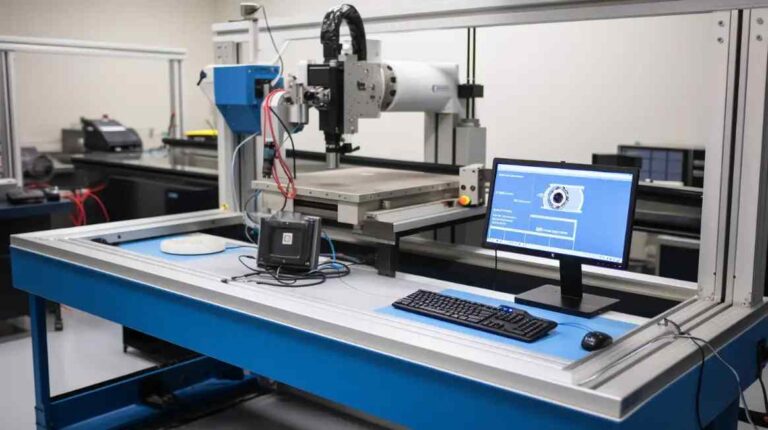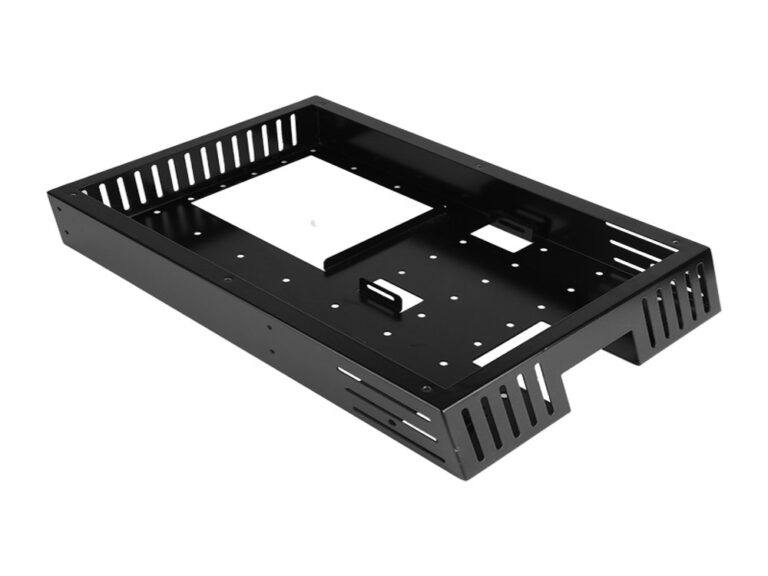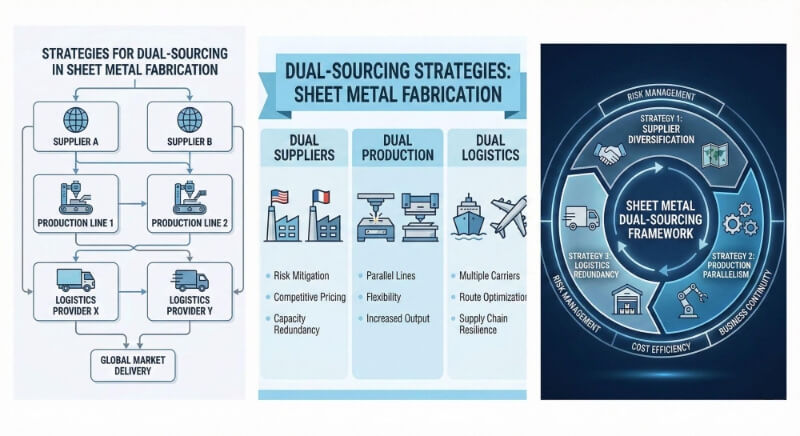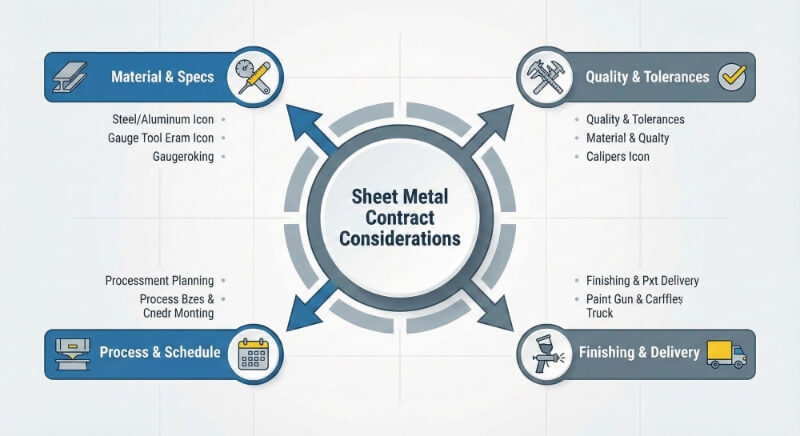Need help with quality issues ruining your custom machining projects? Frustrated by unexpected delays and costly rework? First Article Inspection (FAI) could be the solution you’ve been looking for. This crucial step in the manufacturing process can save you time, money, and headaches down the line.
FAI thoroughly examines the first piece produced in a manufacturing run. It ensures that the part meets all specifications before total production begins. This process catches potential issues early, preventing costly mistakes and ensuring consistent quality throughout production.
Ready to learn more about how FAI can revolutionize your custom machining projects? Let’s explore the key aspects of this critical quality control measure.

Understanding First Article Inspection (FAI)
Definition: What is a First Article Inspection (FAI)?
First Article Inspection (FAI) is a critical quality control process in custom machining. It involves thoroughly examining the first part produced in a manufacturing run. The goal? To verify that the part meets all design specifications and quality standards before full-scale production begins.
During FAI, skilled inspectors meticulously check every aspect of the part. They measure dimensions, assess surface finishes, and evaluate material properties. This thorough examination ensures that the production process is set up correctly and can produce parts that meet requirements.
Importance of FAI: Ensuring Your Custom Parts Meet Specifications
FAI safeguards against potential issues that could arise during total production. By catching and addressing problems early, FAI helps maintain high-quality standards and customer satisfaction.
Preventing Production Errors and Delays
FAI catches potential problems early. By examining the first part, we can:
- Spot tooling issues
- Identify machine setup errors
- Correct any misinterpretations of design specs
Addressing these issues upfront prevents costly mistakes. It saves time and resources in the long run.
Maintaining Quality Standards and Customer Satisfaction
FAI is critical to consistent quality. It ensures that every part in a production run meets standards. This consistency leads to:
- Higher customer satisfaction
- Fewer rejections and returns
- A more substantial reputation for quality
By investing time in FAI, we build trust with our clients. We show our commitment to delivering top-notch custom-machined parts.
The First Article Inspection Process: A Step-by-Step Breakdown
Initiating the FAI Process: Setting Expectations
The FAI process begins with clear communication and planning. This crucial first step sets the stage for a successful inspection and production run.
Defining Inspection Criteria
We start by reviewing all relevant documents. This includes technical drawings, material specifications, and tolerance requirements. Our team carefully analyzes these to create a comprehensive inspection checklist.
Communication Channels: Collaboration Between Customer and Machinist
Open dialogue is critical. We establish clear lines of communication with our customers to ensure all requirements are understood. This collaboration helps prevent misunderstandings and ensures everyone is on the same page.
Conducting the First Article Inspection
The inspection itself is a meticulous process. We leave no stone unturned in our quest for quality.
Dimensional Inspection: Verifying Measurements and Tolerances
We use precision tools to measure every critical dimension. Each measurement is compared against specified tolerances. This ensures the part meets the exact size requirements.
Material Verification: Ensuring Material Properties Meet Requirements
We verify that the material used matches the specifications. This may involve hardness testing, chemical analysis, or other material property checks.
Functional Testing: Assessing Component Performance Under Load
When applicable, we conduct functional tests. This helps ensure the part will perform as intended in its final application.
Visual Inspection: Identifying Surface Irregularities and Defects
We carefully examine the part’s surface. We look for any imperfections, such as:
- Scratches
- Burrs
- Finish inconsistencies
This ensures the part not only functions well but looks great, too.
Documentation: Recording Inspection Results and Findings
Every check and measurement is recorded. This creates a complete record of the inspection process.
FAI Report: A Clear Communication Tool
The FAI report is a crucial document. It provides a comprehensive overview of our findings.
Content of the FAI Report: Detailed Inspection Results and Observations
The report includes:
- All measurements taken
- Results of material tests
- Functional test outcomes
- Notes on visual inspection
We present this data clearly and concisely.
Acceptance or Rejection: Clear Communication of Outcome
Based on our findings, we clearly state whether the part passes or fails. If it fails, we explain why in detail.
Corrective Action Plan: Addressing Non-Conformances
If issues are found, we don’t just identify them – we solve them.
Identifying the Root Cause of Issues
We dig deep to understand why a problem occurred. This might involve:
- Analyzing machine settings
- Reviewing material properties
- Checking tooling condition
Implementing Corrective Measures for Future Production
Once we know the cause, we take action. This could include:
- Adjusting machine parameters
- Updating tooling
- Refining the manufacturing process
These steps ensure that future parts meet all requirements.

Factors Influencing the Complexity of First Article Inspection
Part Design Complexity
The intricacy of a part’s design directly impacts FAI complexity. More complex designs require:
- Additional measurement points
- More sophisticated inspection tools
- Longer inspection times
We adapt our FAI process to handle even the most intricate designs.
Material Selection and Properties
Different materials present unique challenges. For example:
- Exotic alloys may require specialized testing
- Heat-treated parts need hardness verification
- Composite materials demand specific inspection techniques
Our FAI process is flexible to accommodate various material requirements.
Manufacturing Processes Involved
The manufacturing methods used affect FAI procedures. For instance:
- CNC machined parts may need tool path verification
- 3D printed components require layer adhesion checks
- Welded assemblies demand weld quality inspection
We tailor our FAI approach to suit each manufacturing process.
Industry Regulations and Standards
Specific industries have strict quality control requirements. These can include:
- Aerospace AS9102 standards
- Medical device FDA regulations
- Automotive PPAP requirements
We ensure our FAI process complies with all relevant industry standards.
The Benefits of a Robust First Article Inspection System
Improved Product Quality and Consistency
A thorough FAI process leads to:
- Higher overall product quality
- More consistent output across production runs
- Fewer defects and non-conformances
This results in products that meet or exceed customer expectations.
Reduced Risk of Production Errors and Reworks
By catching issues early, FAI helps:
- Minimize costly production errors
- Reduce the need for reworks
- Lower scrap rates
This saves time, materials, and resources in the long run.
Enhanced Communication and Collaboration
FAI fosters better teamwork. It:
- Encourages clear communication between design and production teams
- Provides a platform for discussing and resolving issues
- Aligns everyone’s understanding of product requirements
This collaborative approach leads to smoother production processes.
Increased Customer Confidence and Satisfaction
A robust FAI system builds trust. Customers appreciate:
- Transparent quality control processes
- Detailed documentation of inspection results
- Proactive problem-solving approach
This leads to more robust, long-lasting customer relationships.
Streamlined Production Flow and On-Time Delivery
To ensure the first article is correct, FAI:
- Reduces production bottlenecks
- Minimizes unexpected delays
- Helps maintain production schedules
This results in more reliable delivery times and improved customer satisfaction.
Considerations for Implementing First Article Inspection
Cost-Effectiveness: Balancing Benefits with Inspection Expenses
Implementing FAI requires an upfront investment. Consider:
- Equipment costs for precision measurement tools
- Training expenses for inspection personnel
- Potential production delays during inspection
However, the long-term benefits often outweigh these costs:
- Reduced scrap and rework expenses
- Fewer customer returns and warranty claims
- Improved efficiency in subsequent production runs
We help you find the right balance for your specific needs.
Internal Resources: Availability of Trained Inspectors and Equipment
Effective FAI requires skilled personnel and proper tools. Assess your resources:
- Do you have staff with inspection expertise?
- Is your measurement equipment up to date and calibrated?
- Can you allocate time for thorough inspections?
We can guide you in developing these resources or supplementing them as needed.
Third-Party Inspection Services: Outsourcing Expertise
Sometimes, outsourcing FAI makes sense. Consider this option if:
- You lack specialized inspection equipment
- Your team doesn’t have the necessary expertise
- You need an impartial third-party verification
We offer expert FAI services to complement your internal capabilities.

Best Practices for Effective First Article Inspections
Clear and Concise Inspection Criteria
Establish well-defined inspection parameters:
- Create detailed checklists
- Set clear acceptance criteria
- Define specific measurement points
This ensures consistency and thoroughness in every inspection.
Thorough Communication and Coordination
Promote open dialogue between all parties:
- Hold pre-inspection meetings to align expectations
- Encourage questions and clarifications
- Share inspection results promptly
Good communication prevents misunderstandings and speeds up problem-solving.
Utilizing Standard Inspection Tools and Techniques
Standardize your inspection methods:
- Use calibrated measurement tools
- Follow industry-accepted inspection techniques
- Train inspectors on proper equipment use
This approach ensures reliable and repeatable results.
Maintaining Detailed Documentation Records
Keep comprehensive records of each FAI:
- Document all measurements and observations
- Store inspection reports securely
- Make records easily accessible for future reference
Good documentation supports traceability and continuous improvement.
Continuous Improvement of FAI Processes
Regularly review and refine your FAI procedures:
- Analyze trends in inspection results
- Seek feedback from inspectors and production teams
- Stay updated on new inspection technologies
Continuous improvement keeps your FAI process effective and efficient.
First Article Inspection in the Age of Advanced Manufacturing
Integration with Computer-Aided Design and Manufacturing
Modern FAI processes leverage the power of CAD and CAM systems. We seamlessly integrate these technologies into our inspection workflows.
Our team uses CAD models as a reference during inspections. This allows for precise comparisons between the designed part and the manufactured one. We can quickly identify any deviations from the original design.
Utilizing Automated Inspection Technologies
Automation is revolutionizing the FAI process. We employ cutting-edge automated inspection technologies to enhance accuracy and efficiency.
Our facility is equipped with advanced 3D scanning systems. These scanners create detailed digital models of manufactured parts. We can then compare these scans directly to the original CAD models, quickly identifying discrepancies.
The Role of Digital Inspection Reports and Records
We generate comprehensive digital inspection reports for each FAI. These reports include detailed measurements, 3D scan data, and high-resolution images of the inspected parts. Digital reports are more accessible to share, store, and analyze than traditional paper records.
Our digital record-keeping system allows for quick retrieval of past inspection data. This is invaluable for tracking quality trends or quickly addressing customer inquiries.
We also use data analytics tools to gain insights from our digital FAI records. By analyzing this data, we can identify patterns and trends that help us continuously improve our manufacturing processes.
Conclusion
First Article Inspection is a critical process in custom machining. It serves as the foundation for ensuring high-quality production runs and customer satisfaction.
Implementing effective FAI requires careful planning and execution. Clear communication, well-defined criteria, and meticulous documentation are crucial to success. We ensure our FAI process delivers optimal results by following best practices and leveraging advanced technologies.
Having explored the intricacies of slot milling techniques, you now understand how to optimize your machining process. Should you require further assistance or wish to discuss slot milling options, please do not hesitate to contact Shengen for expert guidance and services.
FAQs
What happens if a first article fails inspection?
If a first article fails inspection, we take immediate action. We halt further production to prevent wasted resources. Our team conducts a thorough analysis to identify the root cause of the failure. We develop and implement corrective measures. We produce a new first article and repeat the inspection process. Only after passing inspection do we proceed with total production.
How often are FAIs required?
The frequency of FAIs depends on several factors. An FAI is always conducted for new parts or designs. It’s also necessary when there’s a significant change in the manufacturing process, a change in materials or suppliers, or after a long production break (typically two years or more).
Who is responsible for the cost of FAI?
The responsibility for FAI costs can vary. Often, the manufacturer includes FAI costs in their overall pricing. Some contracts specify that the customer covers FAI expenses separately. The manufacturer typically bears the cost of rework and re-inspection in failed inspections due to manufacturing errors.
Can FAI be conducted remotely?
Yes, remote FAIs are possible, though they have limitations. We can share detailed measurement reports and high-resolution images. Video calls allow for real-time visual inspections. Some advanced tools enable remote monitoring of inspection processes.
Hey, I'm Kevin Lee

For the past 10 years, I’ve been immersed in various forms of sheet metal fabrication, sharing cool insights here from my experiences across diverse workshops.
Get in touch

Kevin Lee
I have over ten years of professional experience in sheet metal fabrication, specializing in laser cutting, bending, welding, and surface treatment techniques. As the Technical Director at Shengen, I am committed to solving complex manufacturing challenges and driving innovation and quality in each project.




